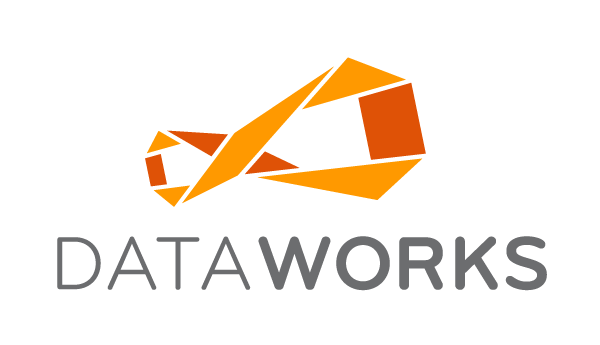We are often asked "What is included in NeXT v5?" Version 5 (code named "Needlefish") is about accounting.
It includes a real time General Ledger interface among many other features
Enhancements
Major -----------------------
Change Cost After Receiving: During invoice reconciliation accounting personnel can audit and correct an item's cost from a processed Packing Slip. An inventory item's cost is updated based on the audit.
New Financial Event: Cost Adjustment / Variance: This event was added to the existing financial events (Inventory Asset, Revenue, COGS, and Shrinkage). When an item's cost changes greater than a defined max adjustment percentage, the system will throttle the change of cost to the maximum percent and post the difference to a journal entry for cost adjustments. This is helpful when an invoice with a cost change arrives after the majority of the items are sold and low in stock or totally out of stock.
Average Cost Smoothing Within Company: Cost changes are now weighted against the Company's Onhand value rather than the Facilities OnHand value. When an item is received with a new cost, the new value is added to the company value of the inventory, and all inventory items belonging to the same company are updated with the new cost. This cost smoothing allows for fewer swings in the cost of an individual inventory item. If the GL interface is turned on this smoothing event creates various debits and credits to the appropriate asset accounts.
Partial Packing Slip Posting To AP Invoices: System now allows for partial quantity posting from one or many Vendor's packing slips to an AP invoice. Vendors who mix and match their invoices and packing slips can now be managed.
General Ledger Interface: Journal entries are created to debit and credit the increase and decrease of the inventory assets. Real time entries are created for Sales, Receiving, RTVs, Transfers and Physical Inventories.
PO Clearing Account Journal Entry-Eliminates Accruals For End of Month: Journal entries are created at the time an inventory item is received or returned to the vendor. Debits and Credits are made to Asset accounts and the PO Clearing account. At the time an AP invoice is approved for payment, Accounts Payable is Credited and the PO Clearing account is Debited, keeping your system's Balance Sheet in sync with DataWorks perpetual inventory system.
AP Invoice Form: Form's user interface improved. Status Command Buttons added. Unlimited internal Notes tab added. System allows for limiting posting of receipts from one Purchase Order or all Purchase Orders.
Time to Floor Calculation: System allows for the forecast of a Vendors lead time by subclass. Options allow for various methods to create forecasts based on statistical analysis.
Flexible Inventory Analysis Periods: System allows for the flexible analysis of inventory sales and onhand values over one or more periods of days, weeks, months, quarters or years. Data can be mined for forecasting sales trends.
Minor -----------------------
Status Form: Status form in System Admin now has "Can be Auto Re-ordered" flag for Inventory Statuses.
Inventory Type Form: Inventory Type form now has the following flages "Can be Auto Re-ordered", "Menu Pricing Allowed", and "Consume When Rule" (Sales, Transfers, Receiving).
Receiving Form: Retail audit changed to reflect changes from PO's input. Void method sped up. If a Transfer Event will be triggered from a receiver, it occurs after the receiver's cost have been posted.
Facility Form: Facility form now has Tax Included Rule (Never, Sometimes, Always). Facility form now has a flag for "Exclude from Suggested Reorders".
Inventory Item Form: Inventory form has check box to indicate Retail or Facility has Tax Included rule. The Ticket Exception for Inventory allows override of Product, Vendor, and Subclass definitions of Ticket Type. Now allow definition of Min Max Plan specific for the Inventory item. Removed the old style command button and made the Ticket on demand a green hyperlink.
Employee Form: Employee form added "Report To Supervisor" field and added Signature Image Tab.
Financial Period: System warns when posting to a Closed Financial Period and uses current Period instead.
Suspense Account Log File: When a Suspense Account is used, the event leading to its' use is logged to the Suspense.log file. The Suspense.log file is located in the same directory as the NeXT security tables and other log files (i.e. Next.log)
Sales Interface: Sales Imports and Inventory Exports can now be run with separate times of day which are independent of a Facilities End of Day. Polling Intervals are now configurable from every 5 minutes to once every 24 hours. SLU Menus are now designed with SKU data rather than existing Inventory records. This allows for SLU's to be defined for MICROS Shared revenue centers. IC Export V. 2 now supports Tax Included. HTNG - Style Web Service Interface to ResortSuite POS system now supported.
User Defined Defaults: Defaults Values for Product Input can now be specified for User Defined Lookup Fields. The User Defined Lookup Fields and User Defined Input Fields for Product Input can now be setup to be either allow null or require input. Product Attribute 1 is now part of what makes a Product unique. Now a Manufacturer+MFR Part No+Subclass+Attribute 1 must be unique. This allows Logos to be defined at the Product level.
Reports: Receiving - Added two new Partial Posted Receiving Reports.
